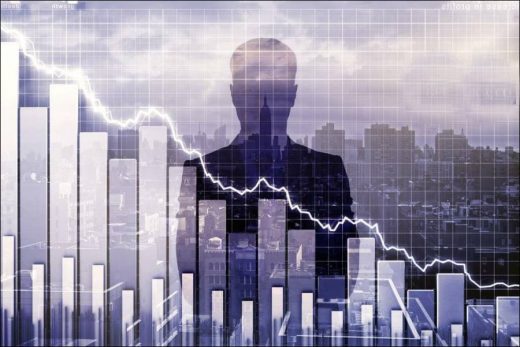October, the nightmare of stock investors with its infamous reputation, is full of uncertainties this year. Investors are tracking many developments from President Donald Trump’s health to the upcoming presidential election.
The Ghost of October to return? US President Donald Trump’s positive coronavirus test led to increased turmoil in the early days of October, which was notorious for being already volatile for the stock market.
Following Trump’s Twitter message about the test, the VIX, known as the fear index of markets and Wall Street all over the world, made the hardest move in a month on Friday. Although the President of the USA was discharged after three days of hospital treatment, his health is still unclear. This uncertainty may further frighten investors who are already on their toes.
However, trying to match the timing of the market often does not work well. Investors are selling at lows in fear after buying higher. Then they are faced with the question of when to repurchase, and as a result, cash is left as the market rises.
October may be volatile for the stock markets. However, it does not always close with a fall. The course of the market is usually first downward and then a stronger upward move.
“When we look objectively at the century-old history of market crashes, October is far less frightening than its fame. October is the scariest month for investors, but October also has higher peaks than other months,” said Sam Stovall, chief investment strategist at research firm CFRA. lower bottoms.” expressed his opinion in the form.
Black Thursday to accelerate the process leading to the Great Depression
Black Monday, Black Thursday and Black Tuesday took place in October: October 19, 1987, October 24, 1929 and October 29, 1929. Black Thursday, when the Dow Jones Index opened with an 11 percent drop in high-volume transactions with the sale of panicked investors, October 29 on Wall Street. It started the collapse that lasted until. As a result of the domino effect triggered by hard sales, the index lost 90 percent of its market value. Almost 25 years has not recovered. A large number of investors who had borrowed money or used high leverage to buy shares were literally wiped out financially. This, in turn, led to large-scale bank failures.
So much so that Black Thursday was the event that accelerated the economic turmoil that drove the US economy into the Great Depression of the 1930s. The collapse affected all western industrialized countries. Tens of millions of people were unemployed in the US and Europe.
For many years, important US elections have been held after October. October of 2018 was particularly uneven. “A month full of uncertainty,” Stovall said.
But there are pretty mundane reasons for volatility. According to Stovall, mutual fund managers who want their performance to look good usually want to realize their earnings as the fiscal year ends in October.
On the other hand, some organizations are repositioning their portfolios in October, following the strategy meetings in September, according to Chris Brightman, CIO of Research Affiliates. “If many investors try to move in the same direction at the same time, that could lead to a serious correction,” Brightman said. said.
Shocks to the health of the US President can trigger drastic action, but in terms of market performance, a significant part of the turmoil is due to non-incident developments.
Views: 203








